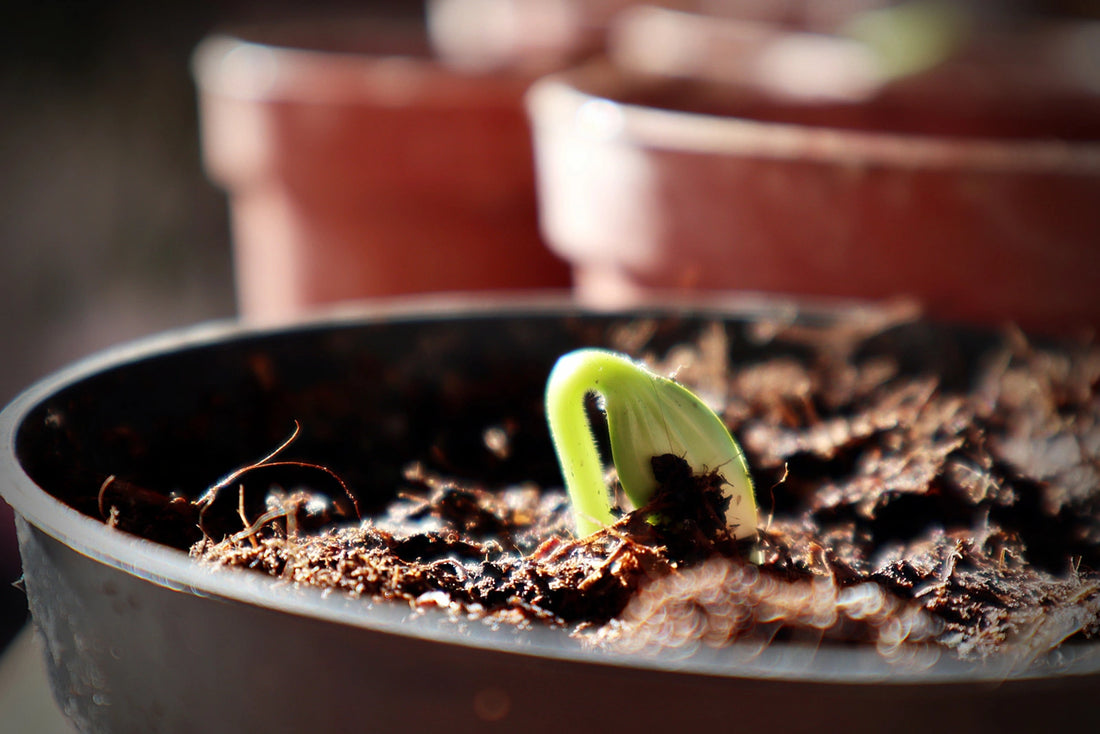Do you have small pots where the earth is all rooted and hard? Break up the soil with a shovel or knife and add some to your vermicompost bin. The worms will love it!
You can reuse the rest of last year's soil. The longer you carefully look after and improve your earth, the busier and richer it becomes! Now, at the beginning of the planting season, you can empty all the smaller pots into a large container, crumble them up a bit and mix the different soils together to produce your own soil.

Improve the old potting soil
For a crumbly, water-retaining soil (substrate) in your flower pots, you can play with these ingredients:
Sand and stones : Ensure that the pouring water can drain off well and also gets inside the pot. You can find sand on the banks of water bodies or in a sandbox. Mix sand into your soil mix before refilling your pots! If a plant likes it drier and less nutritious, you can add more sand (e.g. rosemary).
With larger pots, you can fill in a drainage layer (approx. 5 cm) at the bottom with pebbles.
Clay : Absorbs and stores water and nutrients. Earthworms can make "clay-humus complexes" from clay and broken down organic matter (from your kitchen), which are long stable and very valuable for soil fertility. Take a shovel and a bag with you on your next walk and collect some farm or garden soil, it should be somewhat sticky & malleable, this indicates a high clay content. You can regularly add this soil to your worm composter, or to your soil mix for pots.
(Worm)compost : Brings new nutrients and soil organisms into your soil and revitalizes it. The proportion of vermicompost should not exceed 1/5 of the volume. If there are still a few pieces of eggshell or coarse, woody parts in your harvested vermicompost - no problem! Just add everything to the mixture and the composting process will continue in the flower pot.
Plant roots : are constantly renewed, the dead fine roots are great food for microorganisms. To do this, plants make root excretions (sugars and proteins) available to the soil organisms that live on their roots. Over time, this interaction results in a stable soil structure (crumbs). So you can just leave last year's roots in your soil mix - it would be a shame to remove them, just chop and mix them up a bit.

 Keep large flower pots busy
Keep large flower pots busy
Whenever possible, the soil should be overgrown, preferably with several plants at the same time (mixed culture). This also works in a flower pot! The larger the pots, the easier it is to combine different plants! For example, plan your tomato pots big enough to accommodate basil (which has a good effect on the aroma) and some lettuce underneath!
If your soil is already really good and you mostly have large pots, it is often sufficient to loosen the surface a little and mix some compost into the top layer. Just leave the roots of last year's plants in! This is the best food for the soil creatures and brings humus and structure to your soil, the substrate is slowly becoming an almost real "soil"!


